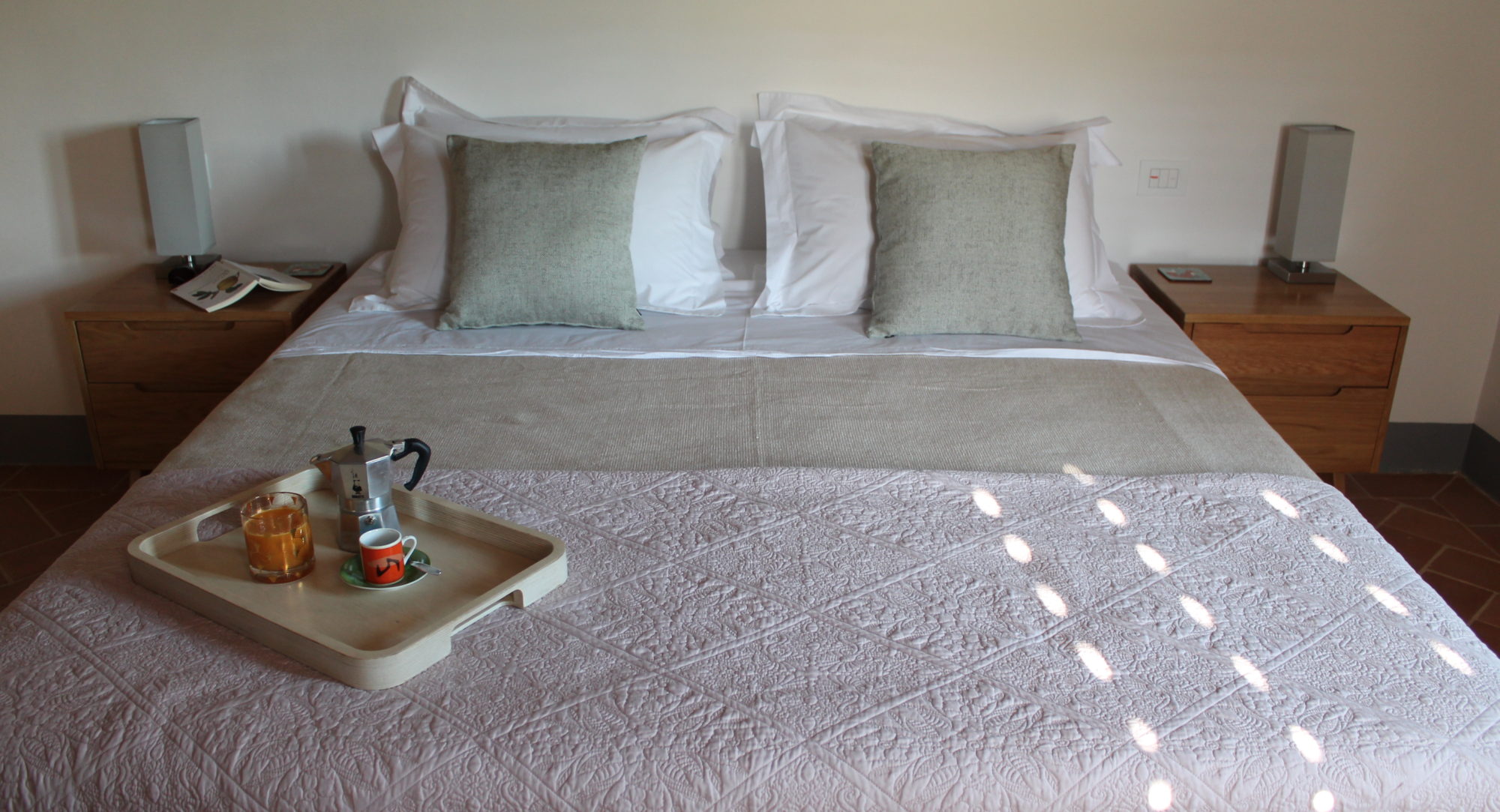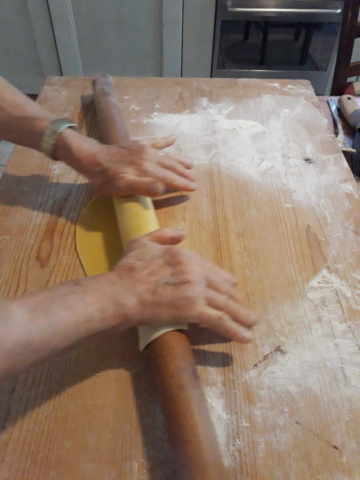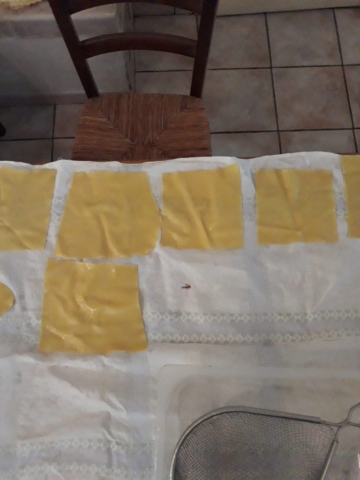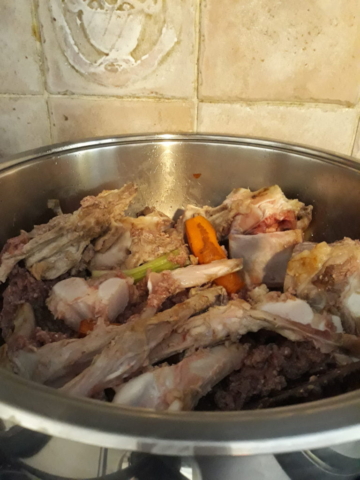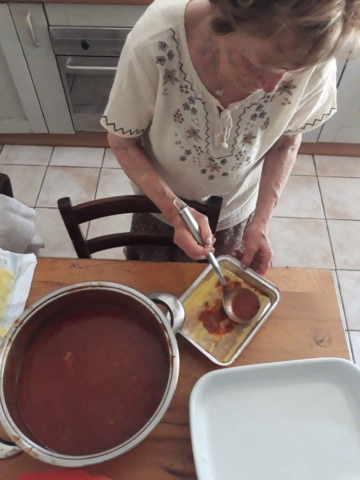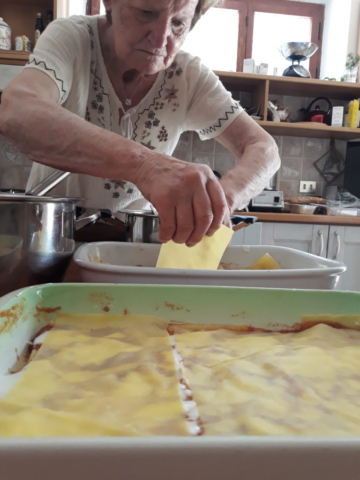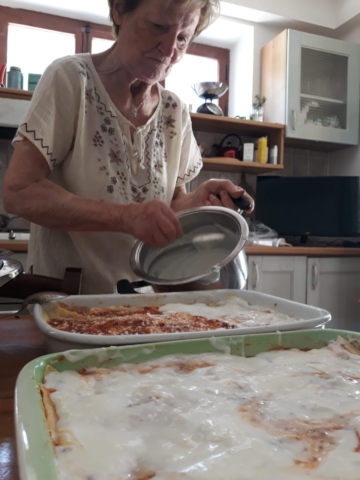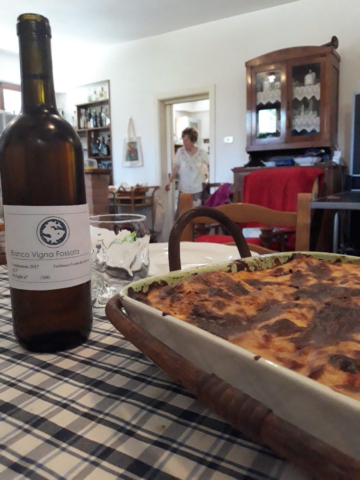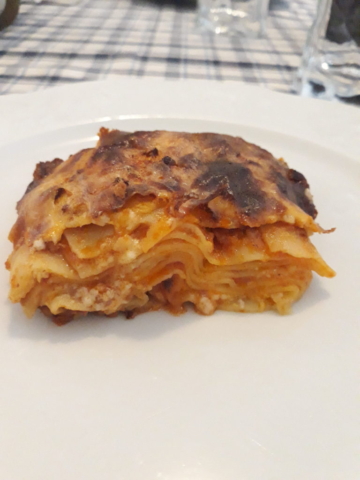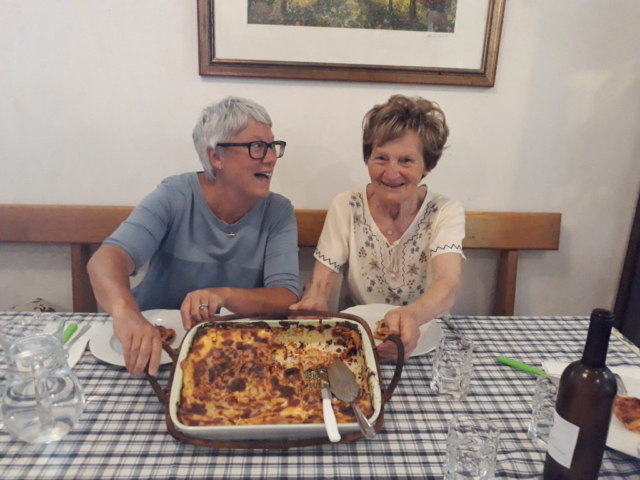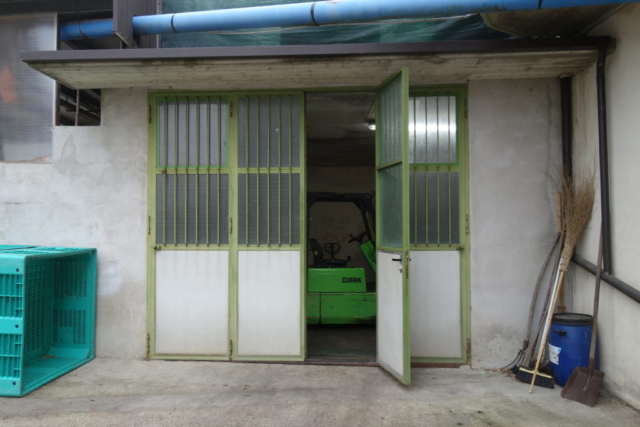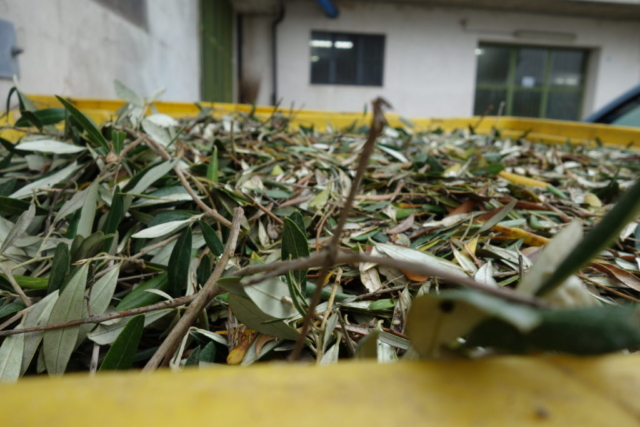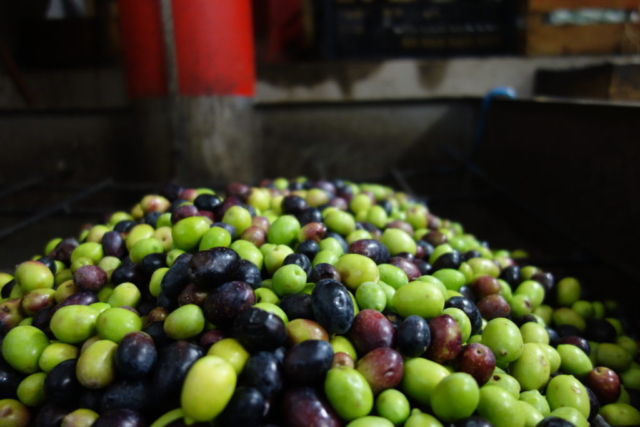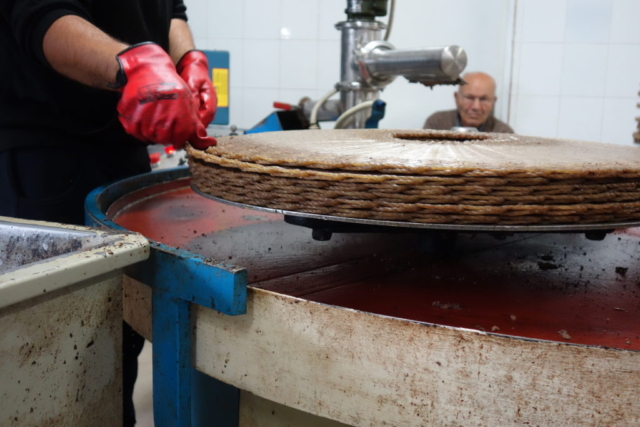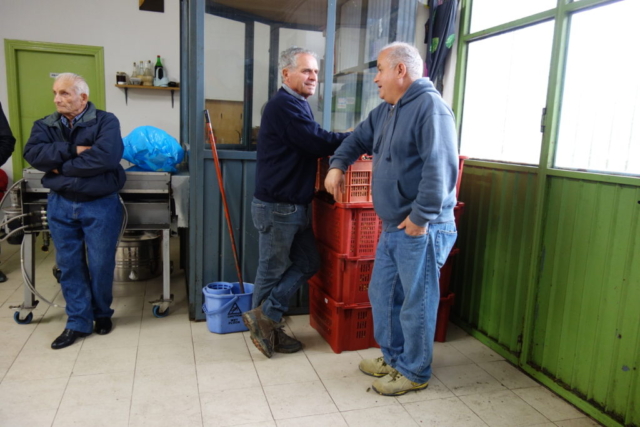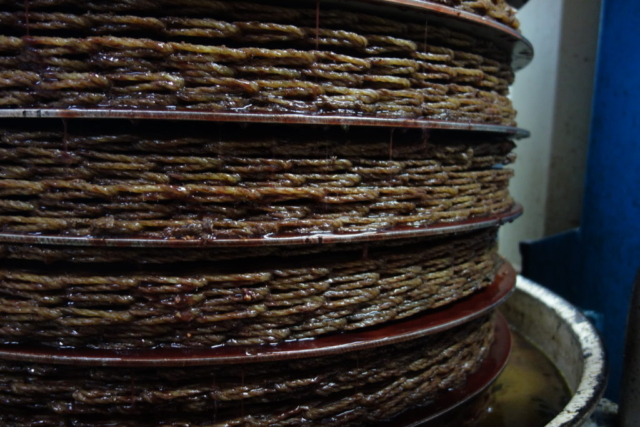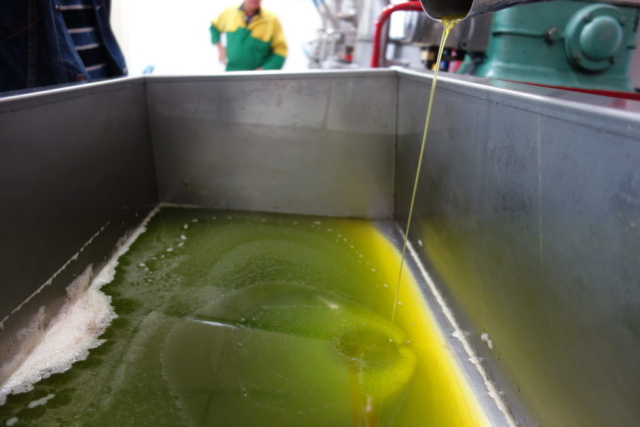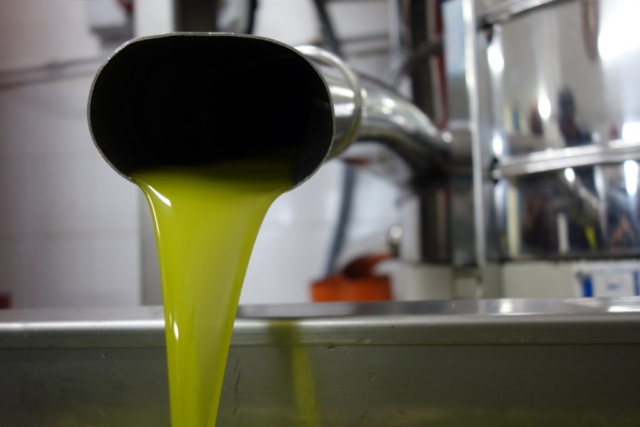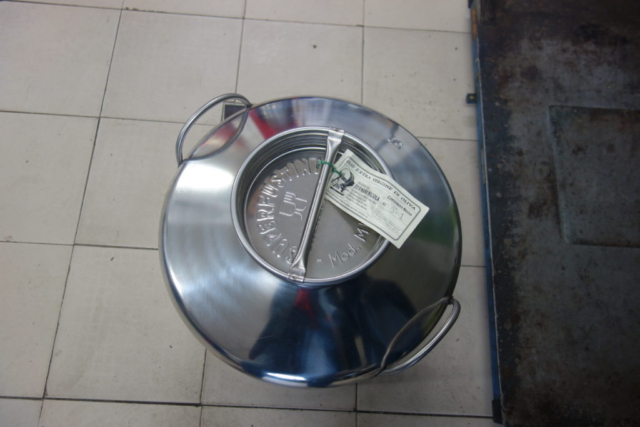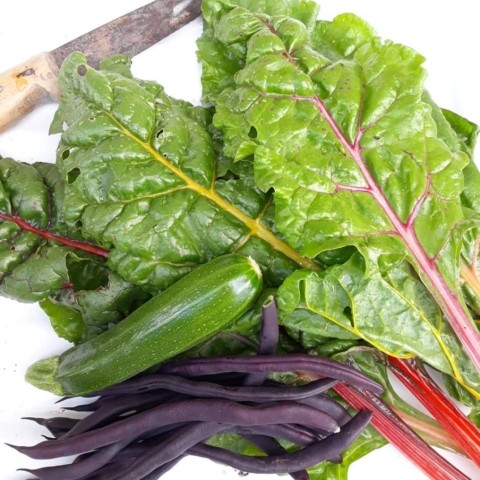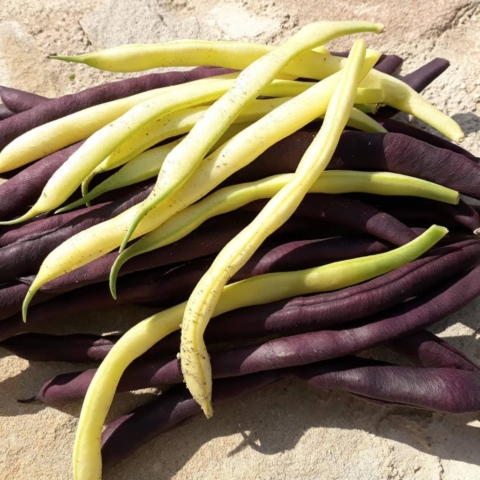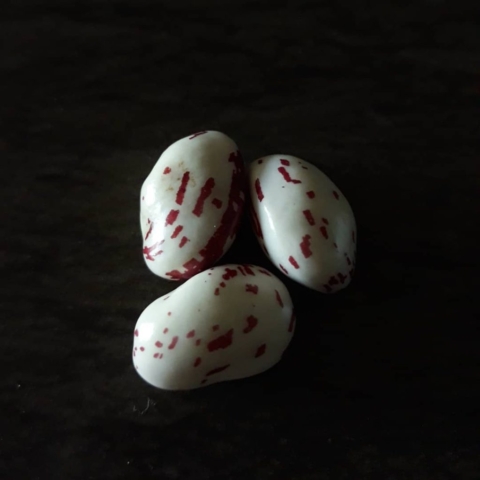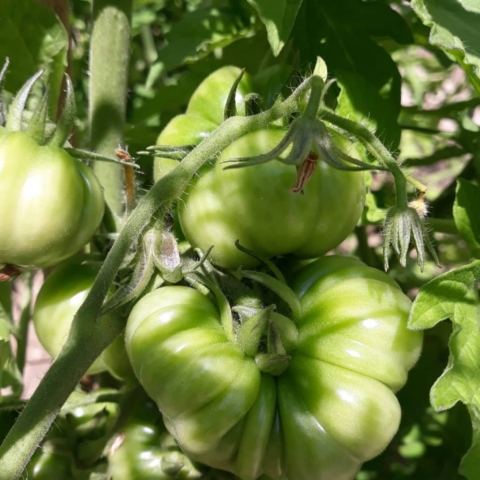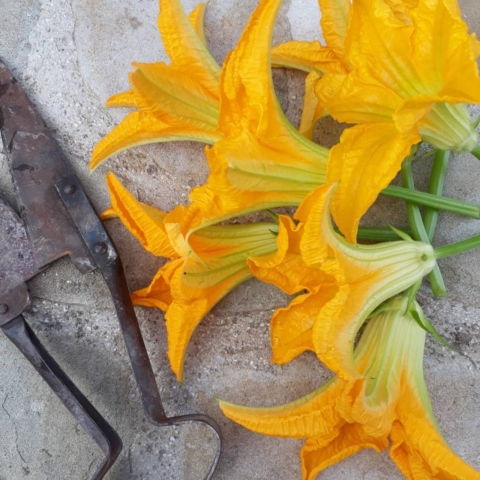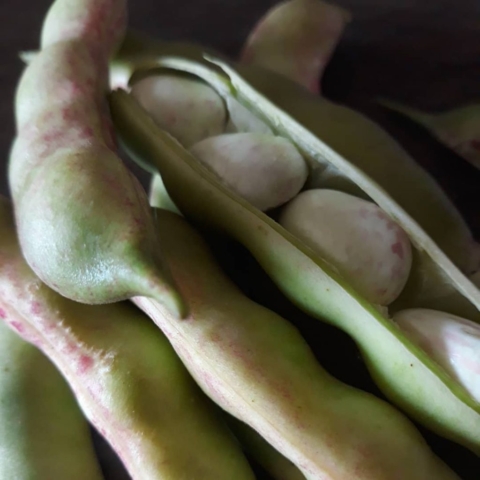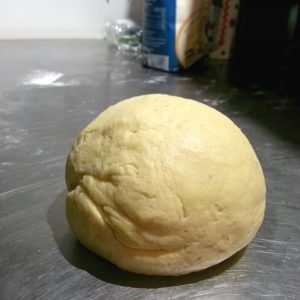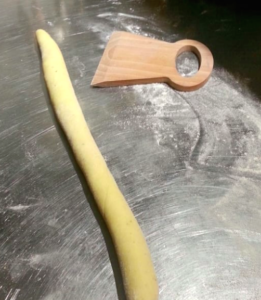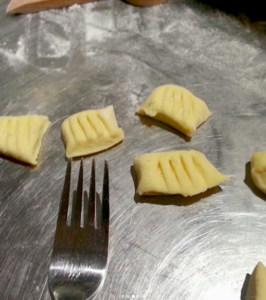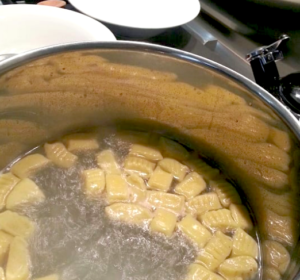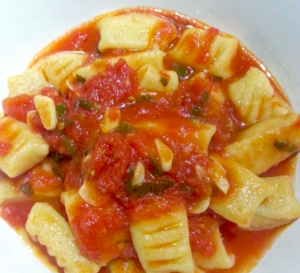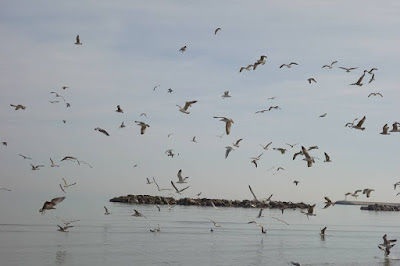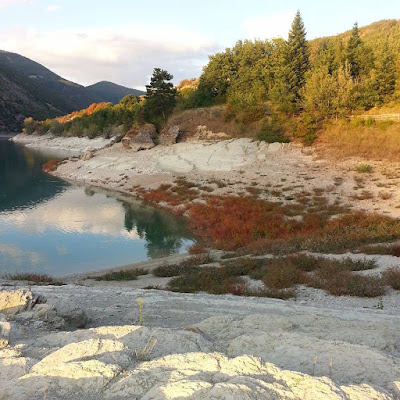We teamed up with our very own pasta granny, 80 year old Leondina, to learn how to make vincisgrassi; Le Marche’s version of lasagna.
Like so many here in Italy, Leondina’s kitchen is tiny, but that doesn’t stop her producing some of the tastiest food we’ve eaten here in Le Marche. She grows much of her own veg, has eggs from her chickens, oil from her olives and wine from her grapes – all of it organically produced. She cooks every day for her children and grand-children, invariably inviting anyone else to sit down and enjoy the feast if they happen to just be popping by. And unsurprisingly there’s a steady stream of visitors to her house.
She very kindly took time out over two consecutive days to show us how to make her version of vincisgrassi. I say her version, because as with many recipes here, they’ve been reinterpreted from household to household, through generations, and different seasons, depending on availability of the various ingredients.
The most authentic version of this dish would include chicken livers, hearts and sweetbreads, something that was missing from the dish we cooked. The rustic nature of the ragu was spot-on though, and Leondina added a mix of meat that she was able to get from the local butcher on the day. Lamb, veal and pork were all included, with lots of bones for extra flavour. The pieces were left whole, or in large chunks, whilst equally large chunks of carrot, celery and onion were added and all browned off in a pan together. In went the homemade passata from last year’s tomato crop, some water and some of her homemade red wine. This was left to blip away slowly on the stove for 3 to 4 hours, perfuming the kitchen and beyond.
This was day two of the cooking lesson, whilst day one had been all about the pasta. Leondina had her trusty Imperia pasta machine clamped to the side of her kitchen table, but we also hand-rolled half of the pasta so that I could see how it was done. She made it look ridiculously easy, but of course, it really wasn’t. We rolled it, cut it and left it in between some clean table cloths to sit out the night until the next morning when we boiled them in batches in a huge pot for around 60 seconds, plunged them into cold water and then lay them out to dry on yet more clean table cloths. (Maybe this is why you see so many table clothes hanging out to dry on the clothes lines around here).
Once the ragu was done cooking, Leondina fished out all of the meat, bones and veg and we were left with a rich tomatoey sauce with all the flavour of the meat. She made a simple bechamel of flour, butter and a litre of milk, and then we started to build the vincisgrassi (all three of them!).
Layers of the meaty/tomato ragu, followed by the pasta were topped with a sprinkling of grated parmesan. Leondina doesn’t like putting the bechamel in between each layer like some folk do, so it was simply tucked in half way through and then a thick layer on top. This gave the top the perfect crispy edges that are a firm favourite of mine.
We then cooked the vincisgrassi in the oven for about 40 minutes. I couldn’t tell you the exact temperature as (of course) we cooked it outside in her wood-fired oven. If had to hazard a guess, I’d say it was about 200 degrees C.
Finally, there was only one thing for it – to sit around her large dining table with two of her grown-up children and one of their friends and sample our hard work. What can I say? It was totally delicious. And much like my Polish grandmother, Leondina wouldn’t take no for an answer when offering both a second, and third portion each.
If you’d like to learn how to make this dish, we’d be happy to offer a relaxed class in our large kitchen as part of your stay with us at Casale Volpe. Just drop us a line.
If you’re interested, you can also see a more authentic version of the recipe here on the Great Italian Chefs website.
